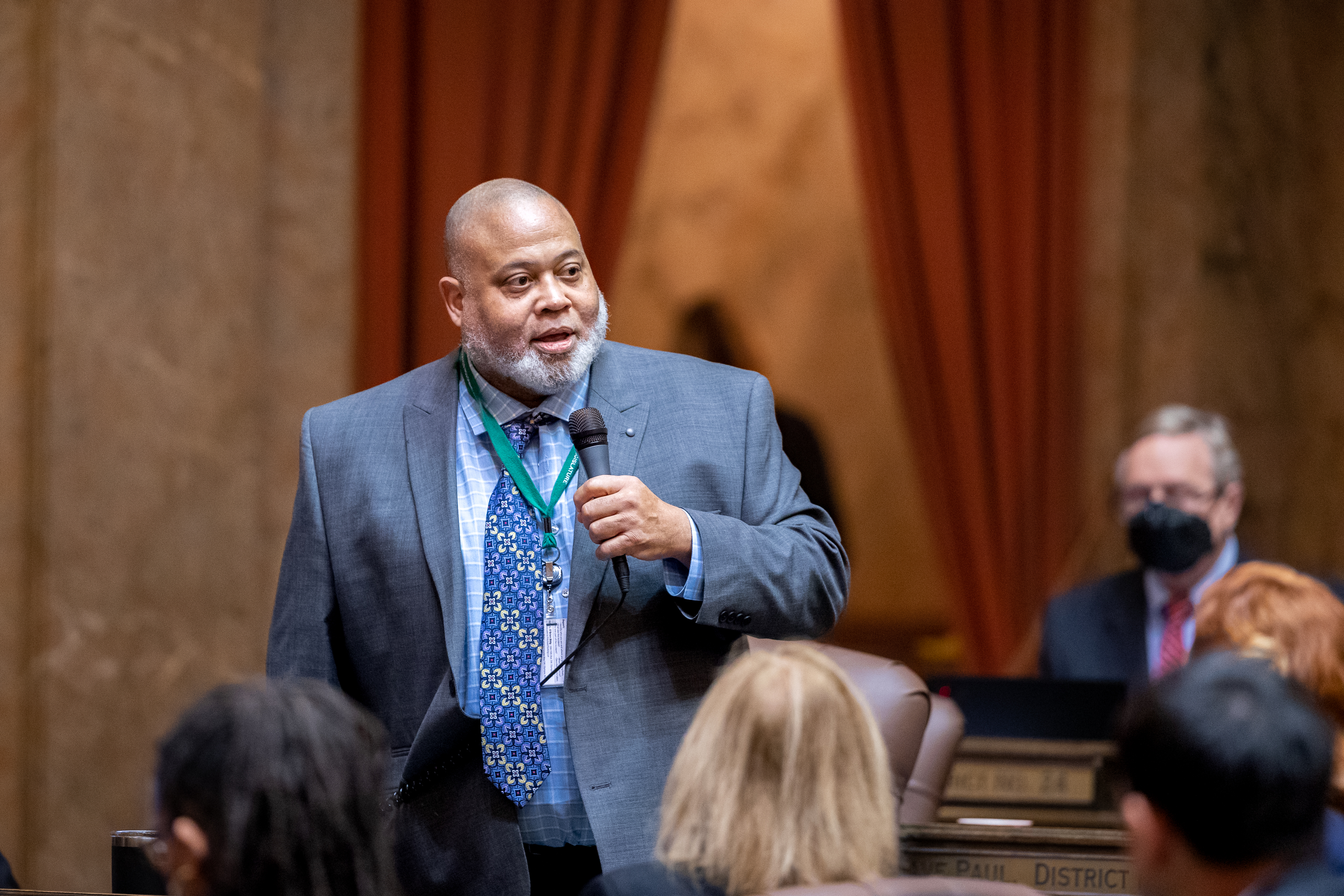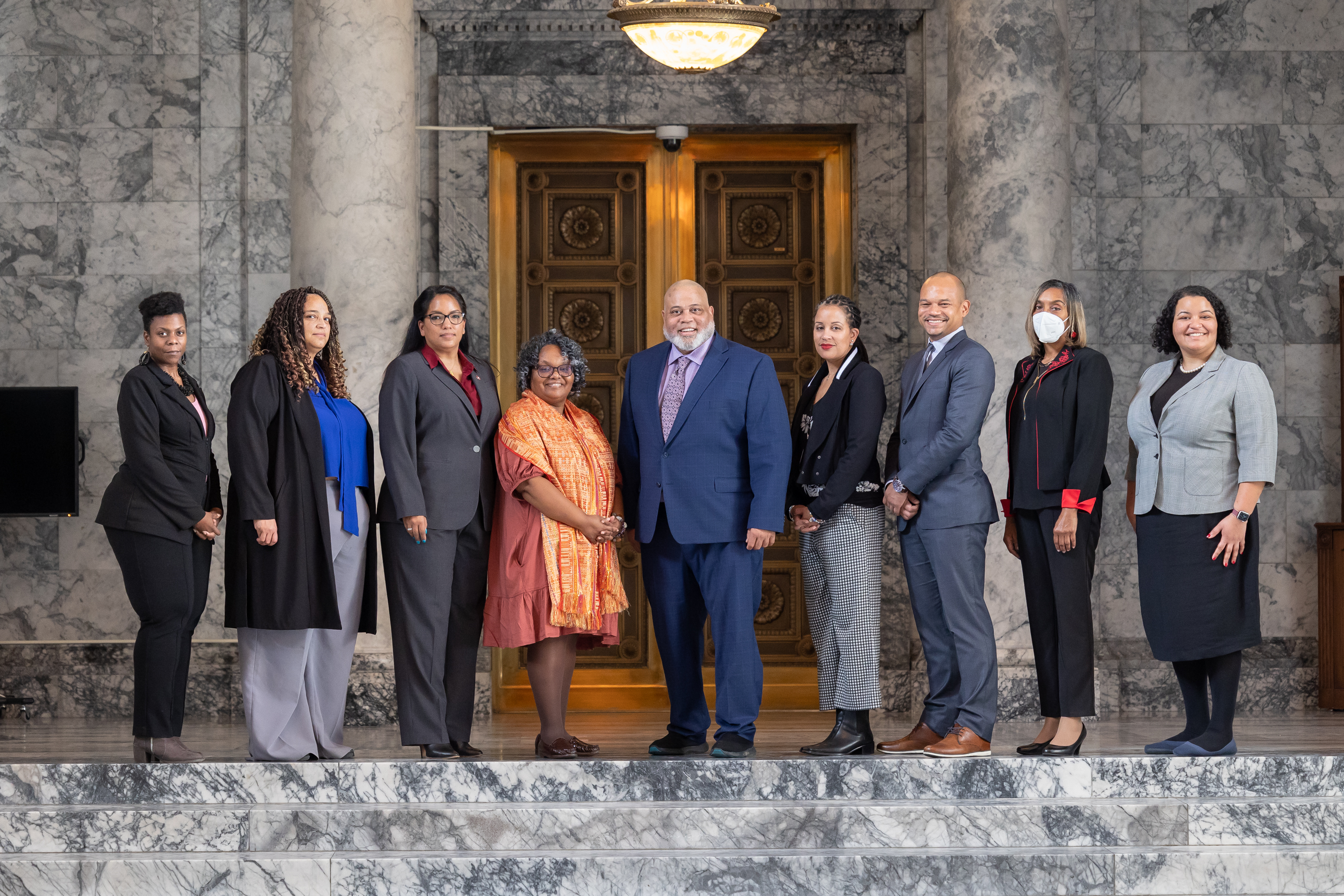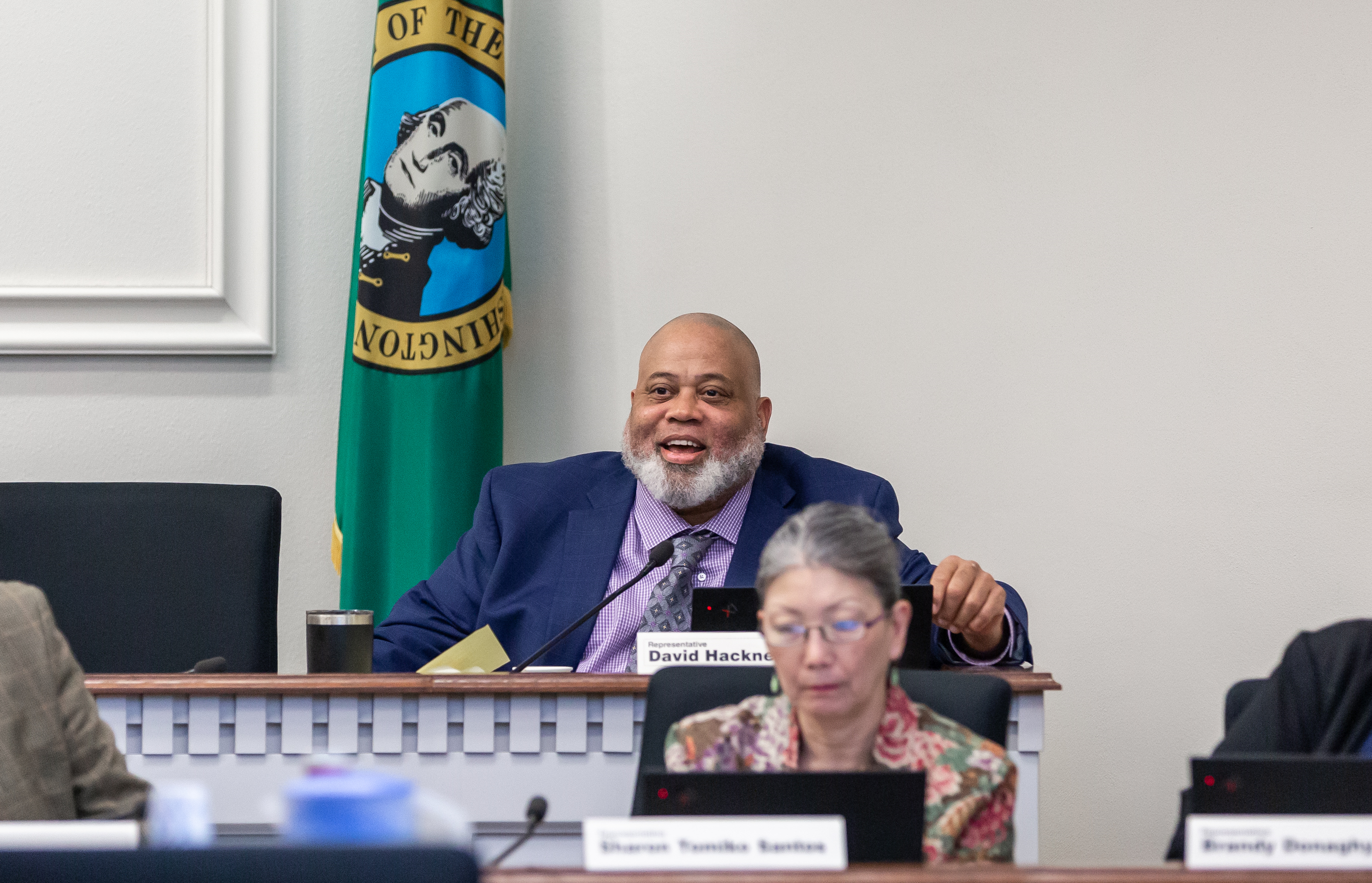When we think about transportation, we often think about how we personally get around — but cleaning up how goods are moved will have an outsized impact on our health and our climate. Semi-trucks do a lot of short-haul trips known as “drayage” to move freight from cargo ships to warehouses and rail yards. Trucks performing drayage go back and forth in communities near ports, contributing to the climate crisis and harming our health. The Legislature should take steps to address this pollution this session.
Right now, all of these trucks run on diesel, and they are often old. As a result, trucks are the second largest contributor to the climate emissions at the ports of Seattle and Tacoma. And according to a Washington State University study, drayage trucks lead to the most concentrated toxic impact on local health.
We can see these health impacts on the Washington Environmental Health Disparities Map, which clearly shows that near-port communities are pollution hot spots. But we don’t need to look at a map online to know this: We can all see, hear and smell the fumes from these trucks — pollution that harms those in the vicinity, including drivers themselves. Take the 11th Legislative District in South King County as an example. It sits between the ports of Tacoma and Seattle, is by Seattle-Tacoma International Airport and Boeing Field, and is intersected by three major highways. We just need to look around to see the impact of transportation pollution. Unfortunately, residents in this district experience some of the worst air quality in the state…
Read my editorial in The Seattle Times.



